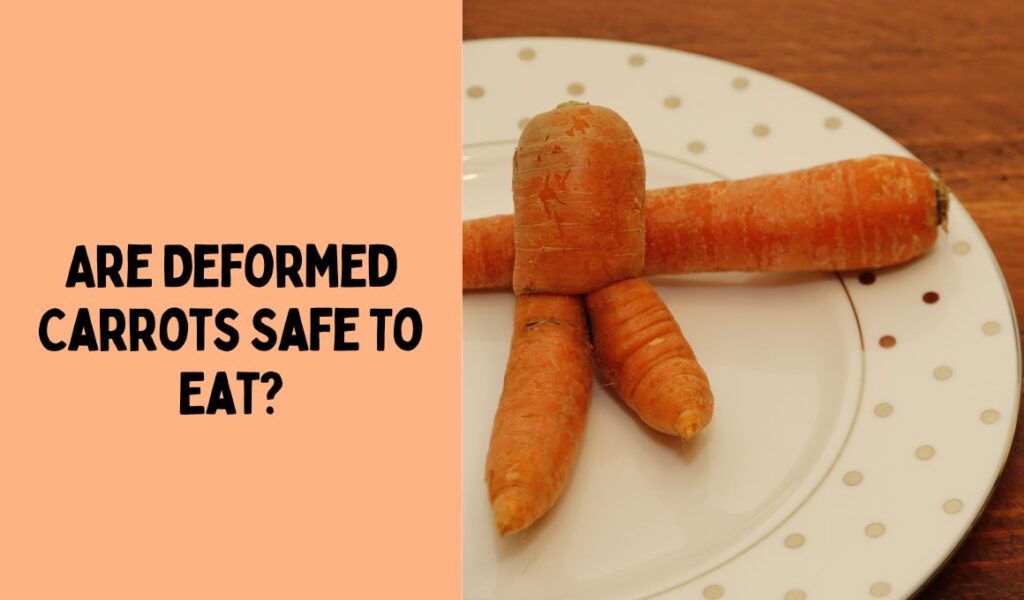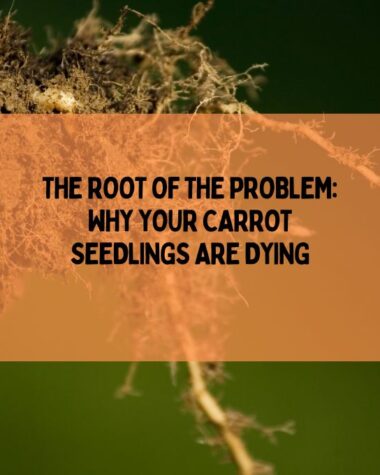Deformed Carrots: If you are growing your carrots and want to prevent deformities, ensuring the soil is well-drained and free of obstacles is essential. This will allow the carrots to grow straight and true.
Carrots are a popular and healthy root vegetable that is consumed by millions of people around the world. However, have you ever noticed that some carrots look a bit strange? Sometimes they may be twisted, forked, or even have multiple roots.
These deformed carrots may not be as visually appealing as their straight counterparts, but they are still perfectly edible and nutritious. In this article, I will delve deeper into why carrots sometimes look weird, what causes these deformities, and how you can fix them.
Do you know why some carrots are bent, forked, or even appear to have been given a pair of legs? Discover what causes these deformities and how you can still enjoy their nutritional benefits.
What Causes Deformed Carrots?
Carrots are root vegetable that grows underground. They are sensitive to environmental factors and can be affected by various factors that can cause deformities.

One of the leading causes of deformed carrots is the presence of obstacles or hard soil in the ground. If a carrot encounters a rock or other hard material, it will bend or fork to grow around it.
Another common cause of deformed carrots is irregular watering. If the soil is too dry, the carrots will become stunted and may grow in odd shapes. Conversely, if the soil is too wet, the carrots may split and grow in multiple directions.
In some cases, disease or pest infestations like root-knot nematodes can also cause the deformation of carrots. A reduction in root-knot nematode populations and an increase in helpful microorganisms may be achieved by applying compost to the affected region.
Root-knot nematode may seem horrible now, but things will become far worse. This garden vegetable’s roots become hairy and deformed due to a disease carried by the aster leafhopper, also known as aster yellow.
Too Much Nitrogen is also one of the significant reasons for carrot plant deformation. The most incredible branching occurred with the highest nitrogen dosage, while the least occurred with no nitrogen dose.
As compared to leafy greens and ornamentals, which need more nitrogen to put into leaf formation, root vegetables, fruits, and flowers benefit from lower nitrogen (N) to phosphorus (P) and potassium (K) ratio.
Weeds, like carrots, have subterranean roots that may impede development and compete for resources; similarly, growing carrots too close together can cause them to twist and branch.
Related Read
Understanding Deformed Carrots
Carrots are a staple in many cuisines worldwide and are a common ingredient in dishes ranging from salads to stews. However, not all carrots are created equal. Some carrots may be deformed in shape, which can impact their quality and flavor.
Types of Deformed Carrots
Deformed carrots come in a variety of shapes and sizes. Some of the most common types of deformities include:
- Forked: This occurs when the carrot has two or more “arms” that branch off the main root. These are often caused by rocky soil conditions that force the carrot to grow in different directions.
- Twisted: Twisted carrots have a spiral shape and may be difficult to peel or chop. This is often caused by genetics or environmental factors that disrupt the carrot’s growth.
- Split: Split carrots have a crack or fissure that runs along the length of the root. This can be caused by uneven watering or temperature fluctuations, which can cause the carrot to expand and contract.
- Knobby: Knobby carrots have bumps or growths on the root’s surface. This can be caused by soil conditions or genetics.
- Small or stunted: Some Grown carrots may be smaller or stunted, which can be caused by various environmental factors, such as poor soil quality or lack of nutrients.
Causes of Carrot Deformities
Several factors can contribute to carrot deformities, including:
- Environmental factors: Temperature fluctuations, inconsistent watering, and soil conditions can all impact the growth and development of carrots.
- Genetics: Some carrot varieties may be more prone to deformities than others due to genetic factors.
- Soil conditions: Carrots need well-draining soil free of rocks and other obstructions to grow straight and uniform.
Identifying Deformed Carrots
Deformed carrots can be identified by their irregular shape or size. You may sometimes see visible deformities, such as splits or bumps on the root’s surface. However, some deformities may only be visible once you cut into the carrot.
Impact on Carrot Quality and Flavor
Deformities can have an impact on the quality and flavor of carrots. For example, split carrots may be more prone to bacterial growth and have a shorter shelf life than straight carrots. Twisted or forked carrots may be more difficult to peel, chop, and cook unevenly.
However, in many cases, the deformities are purely cosmetic, and the carrots are still perfectly safe and nutritious.
Also, Read
- How To Grow Delicious Danvers Carrots?
- Troubleshooting Carrot Growing Problems: Why Won’t My Carrots Develop?
- Carrot Weevils: How To Identify, Prevent, And Manage Infestations In Your Garden
Are Deformed Carrots Safe To Eat?

The good news is that deformed carrots are perfectly safe to eat. The deformities are only cosmetic and do not affect the taste or nutritional value of the carrot. Some chefs and food enthusiasts prefer using deformed carrots in their recipes, believing they have more character and flavor.
How Can You Fix Deformed Carrots?

If you are growing your carrots and want to prevent deformities, ensuring the soil is well-drained and free of obstacles is essential. This will allow the carrots to grow straight and true. Regular watering and proper fertilization can also help promote healthy growth.
If you already have deformed carrots, don’t worry! You can still use them in your recipes. Cut off the affected parts and use the rest of the carrot as usual. You can also use deformed carrots in soups, stews, and purees where their odd shapes are not noticeable.
Conclusion
Deformed carrots may look strange, but they are perfectly safe to eat and can still provide all the nutritional benefits of their straight counterparts.
Understanding the causes of these deformities and how to prevent them can ensure that your carrots grow straight and true. And if you end up with deformed carrots, don’t throw them away – get creative and use them in your recipes!
Happy Gardening!







